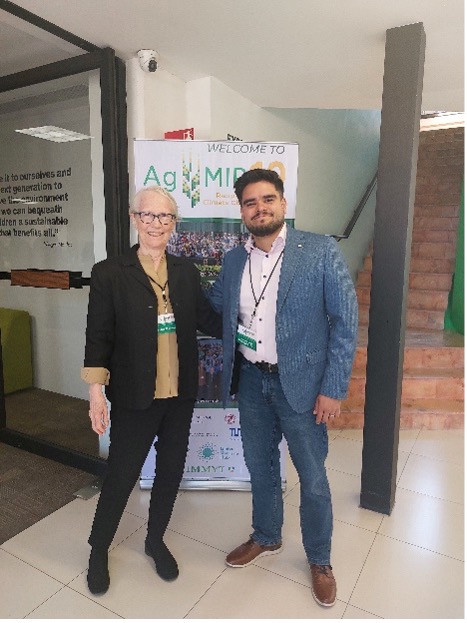By Marcos Esau Dominguez Viera, Foresight Modeling Expert, FoSTr Jordan
In early April 2025, I had the opportunity to attend the 10th Global Workshop of the Agricultural Model Intercomparison and Improvement Project (AgMIP10) in Texcoco, Mexico. The event brought together a vibrant international community of researchers dedicated to advancing the intersection of agriculture, climate change, and food systems transformation.
Marking a decade of collective progress, the workshop underscored the growing importance of rigorous, data-driven insights to inform transformative decisions at both local and global levels. In this blog, I spotlight a regional experience presented at the workshop—our work in Jordan, where we integrated quantitative simulation modeling with stakeholder engagement. This approach enabled local actors to explore and envision the potential impacts of diverse future scenarios on their national food system.

Participatory modelling approach for food system transformation in Jordan
Across the global econ modelling community, we are seeing growing interest in deep-dive studies at the country level. In this sense, I had the opportunity to speak at a session on regional integrated assessments of risk and adaptation options. I shared insights from our ongoing work under the FoSTr (Foresight for Food Systems Transformation) programme in Jordan. Over the past three years we’ve combined the power of MAGNET—a global general equilibrium model—with inclusive, participatory foresight approaches in the country. This iterative process brought together data and diverse perspectives to explore two very different scenarios for Jordan’s food system between 2025 and 2040.
I break down these scenarios in more detail below.
Two Futures: Business-As-Usual vs. Desired Transformation
Business-As-Usual (BAU)
- Jordan’s population hits 16 million by 2040
- GDP grows modestly at 2.6% annually
- Agricultural productivity is input-driven (mainly fertilizer use)
- Trade barriers and climate change threaten food security
- A continued shift toward Western diets
Desired Scenario
- Population growth slows (13 million by 2040)
- Regional conflicts do not affect trade
- Climate resilience increases
- Food loss and waste is cut by 50%
- Population shifts to Jordanian Mediterranean diet
What we’ve learned from the simulations
Our analysis shows that in a business-as-usual world, Jordan faces escalating challenges:
- Socially: Diets become less healthy
- Economically: The country grows more dependent on food imports
- Environmentally: Fertilizer use and greenhouse gas emissions intensify
In contrast, the desired future—though ambitious—offers promising synergies:
- A healthier population
- Stronger domestic production and potential export growth
- Reduced vulnerability to climate shock
But not all looks bright in the desired future. Some trade-offs remain, especially environmental ones. Increasing the production of healthy foods could still lead to a rise in chemical fertilizer use. A so-called “efficiency paradox” may occur, where a highly productive agricultural sector creates incentives to increase production for export markets, potentially intensifying emissions. That’s why we advocate for holistic policy bundles that tackle health, trade, and sustainability together.

Building Trust and Enhancing the Usefulness of Foresight Modeling
By actively involving local stakeholders—from government agencies to civil society—we were able to strengthen both trust in the modeling process and its perceived relevance. Partnering with the right in-country actors significantly increases the likelihood that simulation results will inform real-world decision-making.
Key partnerships played a critical role in this effort. In addition to the indispensable contribution of in-country facilitators, we collaborated closely with the Food Security Council, NAJMAH (National Alliance Against Hunger and Malnutrition), and the Embassy of the Netherlands in Jordan. This inclusive, participatory approach laid the foundation for developing context-specific solutions, such as strategies to reduce food loss and waste tailored to Jordan’s unique food system challenges.
What Sparked Participant Interest
Workshop participants were particularly engaged during the presentation, raising thoughtful questions about both the participatory process and the technical foundations of the work. Many wanted to understand the core components that defined our participatory approach and the key assumptions behind the contrasting scenarios—especially the policy mechanisms underlying the “desired future” pathway.
There was also strong interest in how the modeling results could be translated into action, particularly how they might shape or influence policy development. Some attendees were curious about the data sources used for the Mediterranean diet, while others focused on the composition of stakeholders and whether that mix evolved over the project’s three-year duration.
